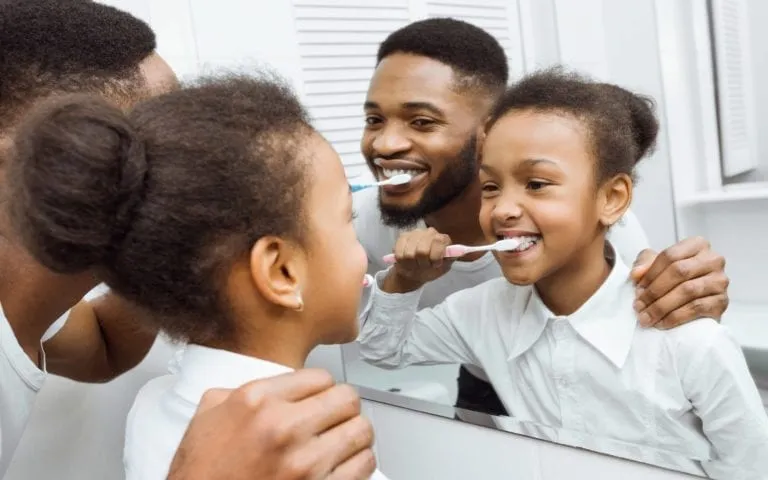For budding families and future generations, promoting healthy oral hygiene can help foster family relationships, help parents care for their child’s health, and prevent the onset of various oral diseases. Dental hygiene, however, remains one of the most difficult issues to tackle for families due to how common oral diseases occur, how troublesome they are to control, and how these problems affect other aspects of daily life. When it comes to teaching techniques, your dentist knows best to help you and your children have healthier smiles and brighter futures.
How Proper Oral Habits Changes Families
According to the CDC, 1 of 7 children between the ages of 12 and 19 years old will have at least one untreated cavity, and low-income families are twice as likely to have cavities for children between ages 5 to 19 years old. When poor oral health persists in families, school life, domestic relationships, future opportunities, and finances can be hindered drastically. As these problems continue to be tackled within everyday life, our goals as dentists are to encourage good oral hygiene practices to families everywhere to help prevent the onset of serious diseases and protect children’s health for years to come.
Here, we will go over the basics of good oral care and will offer some tips to help establish these habits throughout your child’s early years into adulthood.
- Brushing: As the basic building block of good oral care, brushing should be done twice a day to encourage healthy teeth and a happy smile. For children just learning how to care for their teeth, it’s essential to take part in these brushing habits to make sure that they see you as an example of good parenting, and you can help them learn from the best how to brush their teeth. One of the most important aspects of brushing is to increase their fluoride intake through using fluoride toothpaste and drink fluoridated water to ensure their teeth can remain strong.
- Flossing: Flossing, just like brushing, should be done twice a day. However, this is often one of the most underappreciated habits, as it is often either forgotten or ignored due to how uncomfortable it may be. It may be especially discouraging for children due to how it goes in between the teeth and around the gum tissue. But luckily, many flossing products can accommodate children who don’t like flossing, such as floss pickers and tasty floss flavors to help encourage them more.
- Mouthwash: If your children are old enough to handle mouthwash, encourage them to use mouthwash after brushing and flossing. Mouthwash adds the final finish to a healthy mouth by removing any leftover bacteria along with the teeth and gums and should be used minimally to keep teeth healthy and clean. If your child doesn’t like the alcohol side effects, alcohol-free varieties also help them clean their teeth.
How To Begin Teaching These Habits To Your Family
These habits take time to remember for children, so the essential part of establishing these habits is to create a consistent environment that revolves around routine. Routines and repetitive activities can help reinforce these great habits into them to carry these teaching into adulthood. If you need any more information, contact your pediatric or primary dentist to get the best resources for healthy smiles.




